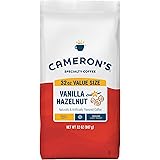How to Master the Art of Café Cubano: Crafting Authentic Cuban Coffee with Faux Crema
For many coffee enthusiasts, the pursuit of a truly exceptional brew is an ongoing journey, often leading to a desire for specific, culturally rich preparations. One such coveted experience is the authentic taste of Cuban coffee, or Café Cubano, renowned for its robust flavor and characteristic sweet foam, known as "espuma." Achieving this distinctive beverage, particularly the luxurious, thick crema often associated with espresso machines, might seem like a formidable challenge for the home brewer. However, the accompanying video above effectively demonstrates that a truly traditional and satisfying Cuban coffee can be created using a simple Moka pot, perfectly emulating the rich textures and flavors typically found in specialized cafés.
Understanding the Essence of Cuban Coffee
Cuban coffee is not merely a beverage; it represents a significant cultural staple, deeply woven into the fabric of daily life on the island and within Cuban communities globally. This strong, sweet, and often dark roast coffee is typically consumed in small, concentrated doses, offering a profound sensory experience. Furthermore, its unique preparation method, particularly the creation of the "espuma," differentiates it significantly from standard espresso or drip coffee. Imagine if every morning began with a rich, aromatic shot of coffee crowned with a sweet, velvety foam; this is the everyday luxury that Cuban coffee provides.
The term "espuma," sometimes referred to as "crema," is central to the Cuban coffee experience. This isn’t the crema produced by high-pressure espresso machines, which results from emulsified coffee oils; instead, it is a "faux crema" meticulously whipped from sugar and a small amount of the initial, highly concentrated coffee extract. This process yields a light, airy, and intensely sweet paste that dissolves into the final brew, lending an unparalleled creaminess and balancing the inherent bitterness of the dark roast. The careful balancing of these elements ensures a truly authentic Café Cubano.
Selecting the Ideal Ingredients for Authentic Café Cubano
The foundation of any exceptional coffee lies in its ingredients, and Cuban coffee is no exception. Selecting the proper components is crucial for achieving the desired flavor profile and texture. High-quality ingredients are paramount for the creation of this iconic beverage.
- Cuban-Style Coffee: A dark roast coffee is generally preferred, often with a robust blend of arabica and robusta beans. These specific blends are crafted to withstand the strong brewing method and the addition of sugar without losing their characteristic intensity. Availability is quite broad; most well-stocked grocery stores often carry specific "Cuban-style" or "espresso roast" coffees, ensuring accessibility for the home brewer.
- White Granulated Sugar: While various sweeteners exist, white granulated sugar is traditionally used for Café Cubano. Its fine crystals facilitate the whipping process, creating the smooth, frothy espuma. Experimentation with different sugars is possible, but for a truly authentic experience, white sugar is unequivocally recommended.
- Water: Filtered water is always advised for coffee brewing. The presence of impurities or undesirable minerals in tap water can significantly alter the coffee’s taste and potentially hinder the extraction process.
The Moka Pot: Your Essential Tool for Café Cubano
The Moka pot, a stovetop espresso maker, is undeniably the most accessible and widely utilized apparatus for crafting Cuban coffee at home. Its ability to generate pressurized steam results in a concentrated brew remarkably similar to espresso, making it ideal for the intense flavor profile required for Café Cubano. Furthermore, the simplicity of its design belies its effectiveness in producing consistently excellent coffee.
Understanding the Moka pot’s components and their functions is beneficial. It comprises three primary sections: the bottom chamber for water, the middle filter basket for ground coffee, and the top chamber where the brewed coffee collects. The principle of operation involves steam pressure forcing hot water up through the coffee grounds, extracting the concentrated liquid. Optimal maintenance of this device ensures longevity and consistent performance; regular cleaning is essential to prevent residue buildup, which can impact flavor.
Precision in Preparation: Assembling Your Moka Pot for Optimal Extraction
Proper preparation of the Moka pot is a critical step that often determines the quality of the final Cuban coffee. Adherence to specific guidelines is advised to ensure an efficient and flavorful extraction process. Moreover, attention to detail at this stage prevents common brewing pitfalls.
- Disassembly and Water Filling: The Moka pot should be completely disassembled. Water is subsequently added to the bottom chamber, stopping precisely at the bottom of the pressure release valve. Overfilling can lead to over-extraction and a weaker brew, as the steam has less room to build pressure.
- Coffee Grounds Preparation: The filter basket is then filled with finely ground coffee. The grind consistency should approximate that of table salt—finer than drip coffee but coarser than true espresso. Crucially, the grounds must not be tamped down or overfilled. A gentle leveling with a finger is sufficient, as tamping can restrict water flow and lead to a burnt taste. A clean lip on the filter basket, free of stray grounds, ensures a tight seal upon reassembly.
- Reassembly: The Moka pot is then carefully reassembled, with the top and bottom chambers screwed together tightly. A secure seal is paramount for proper pressure buildup and prevention of steam leaks during brewing.
The Art of Espuma: Whipping the Sweetness into Cuban Coffee
The creation of the "espuma" is arguably the most distinctive and fascinating aspect of making Cuban coffee. This technique, while seemingly simple, demands precision and vigorous execution to achieve the desired frothy consistency. It is through this meticulous process that the coffee transforms into its characteristic form.
As the Moka pot begins its brewing cycle on medium to low heat, attention must be paid to the initial drips of coffee that emerge. These initial drops are exceptionally concentrated and rich in flavor, making them ideal for the espuma. It is recommended that half to one full teaspoon of this initial coffee extract be swiftly added to the granulated sugar, which has been pre-measured in a separate mixing cup (typically 1-2 teaspoons per serving, with two teaspoons leading to a sweeter, more traditional outcome). Immediately after collecting this initial coffee, the Moka pot should be removed from the heat to prevent over-extraction of the remaining brew, which might result in a bitter taste.
The subsequent step involves vigorously whipping the sugar and coffee mixture. This stage demands considerable effort and persistence; the mixture must be beaten continuously until it transforms into a thick, foamy, and notably lighter-colored paste. Imagine if insufficient whipping were to occur; the resulting foam would be thin and inconsistent, failing to deliver the authentic Cuban coffee experience. There is no risk of over-beating the mixture; the more thoroughly it is whipped, the lighter and more voluminous the espuma will become. This paste is the hallmark of a truly authentic Cuban coffee.
Beyond the Basics: Tips for Elevating Your Cuban Coffee Experience
While the fundamental steps for preparing Café Cubano are relatively straightforward, several advanced considerations can further refine and enhance the overall brewing experience. Mastering these nuanced aspects allows for a truly personalized and superior cup.
- Heat Management: The heat source’s intensity directly impacts the brewing speed and the coffee’s flavor. A medium to low heat setting is generally recommended, allowing for a slower, more controlled extraction. Rapid boiling can scorch the coffee grounds, leading to a bitter and unpleasant taste. Furthermore, maintaining thermal stability throughout the brewing process is crucial.
- Grind Consistency: Although mentioned previously, the importance of grind consistency cannot be overstated. An overly fine grind may choke the Moka pot, producing an over-extracted and burnt flavor, while a coarse grind can lead to under-extraction and a weak, watery brew. Fine-tuning this aspect is an ongoing process for many home brewers.
- Serving Rituals: Cuban coffee is traditionally served in small, two-to-three-ounce demitasse cups, reflecting its potency and the social nature of its consumption. The dark, rich coffee is poured directly into the cups containing the espuma, which then rises to the top, creating the distinctive layered appearance. The visual appeal of the creamy top layer contrasted with the dark coffee below is an integral part of the experience.
- Experimentation with Ratios: While specific measurements are provided (e.g., 1-2 teaspoons of sugar per serving, 1/2 to 1 full teaspoon of initial coffee for espuma), personal preference plays a significant role. Adjusting the amount of sugar or the volume of initial coffee used for the espuma can lead to a customized beverage perfectly suited to individual tastes.
Troubleshooting Common Cuban Coffee Challenges
Even with careful adherence to instructions, challenges can arise during the preparation of Cuban coffee. Understanding common issues and their solutions can significantly improve consistency and quality in your brewing endeavors.
- Weak or Watery Coffee: This often indicates under-extraction. Possible causes include an overly coarse grind, insufficient coffee grounds in the filter basket, or brewing with too high a heat, which rushes the extraction process. Ensuring proper grind size and adequate coffee quantity is paramount.
- Bitter or Burnt Taste: Over-extraction is the usual culprit here. This can result from an overly fine grind that impedes water flow, tamping down the coffee grounds, or prolonged brewing at excessive temperatures. Removing the Moka pot from the heat promptly after the coffee begins to flow can mitigate this.
- Lack of Espuma: A thin or absent espuma typically points to insufficient whipping of the sugar and initial coffee mixture. The whipping process must be vigorous and sustained until the desired light, frothy consistency is achieved. Additionally, using too little sugar or coffee in the mixture can hinder espuma formation.
- Steam Leaks: If steam escapes from the Moka pot during brewing, it usually indicates that the top and bottom chambers were not screwed together tightly enough, or that coffee grounds are obstructing the seal. Always ensure a secure fit before placing the pot on the burner.
The mastery of creating authentic Café Cubano at home is a rewarding endeavor, allowing one to replicate a beloved cultural tradition with precision and passion. The distinct process of Moka pot brewing combined with the meticulous creation of the "espuma" yields a coffee experience that transcends the ordinary, offering a rich, sweet, and deeply satisfying brew.







